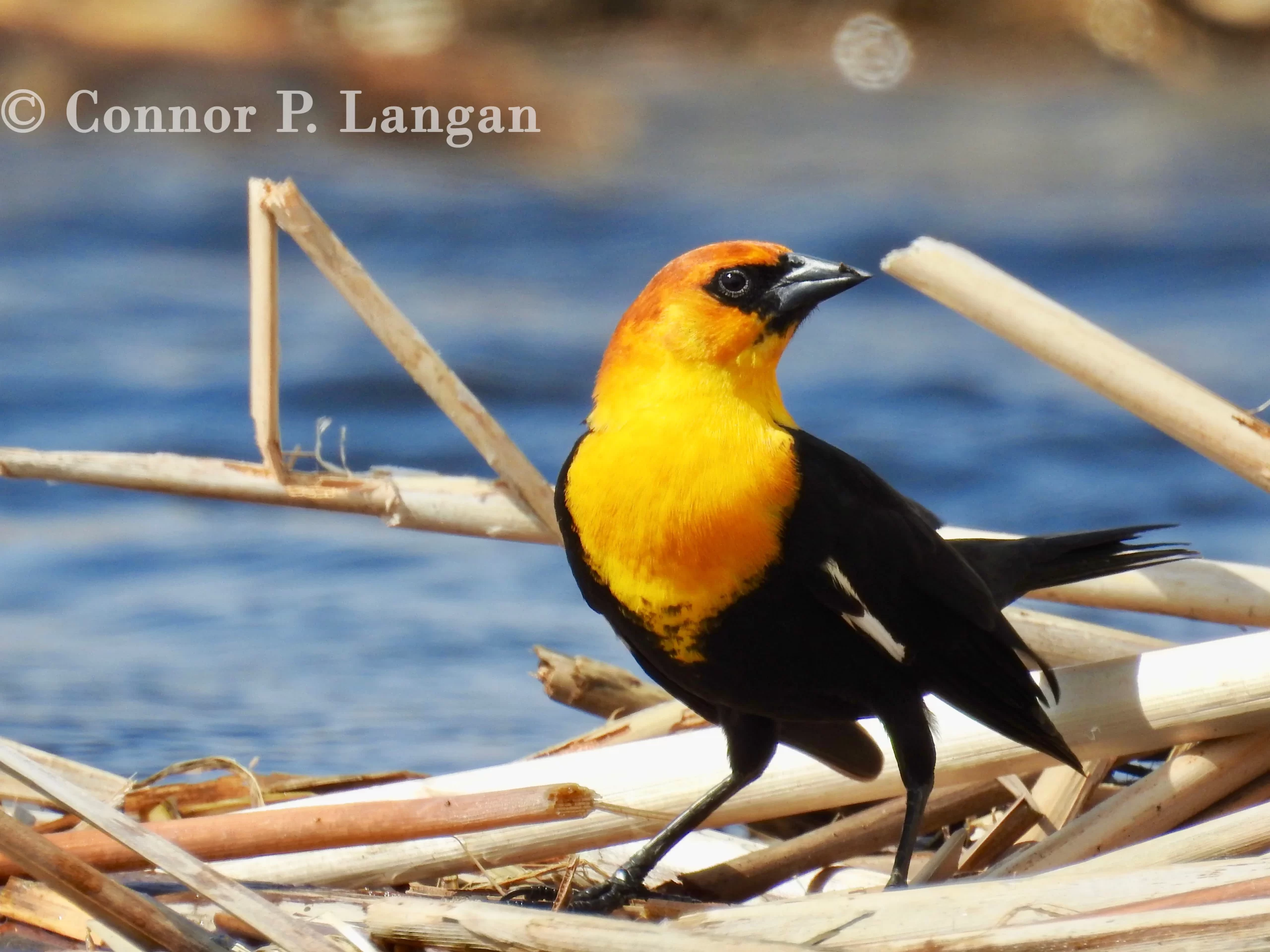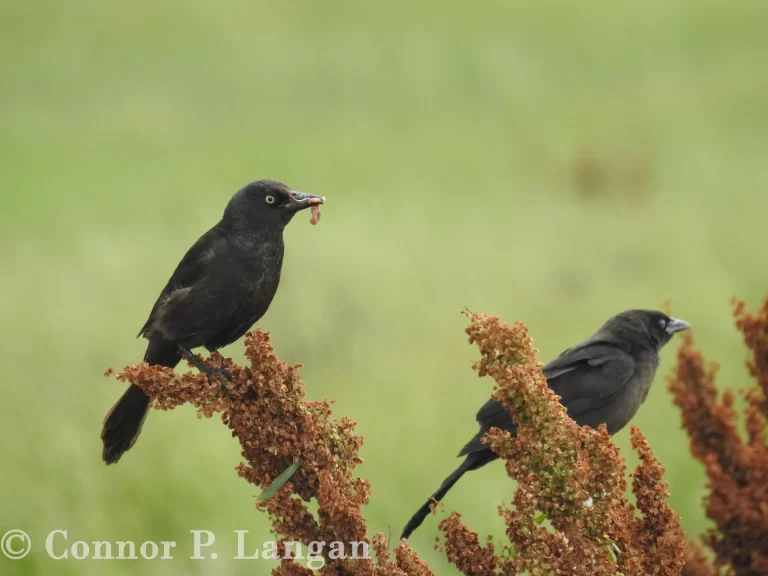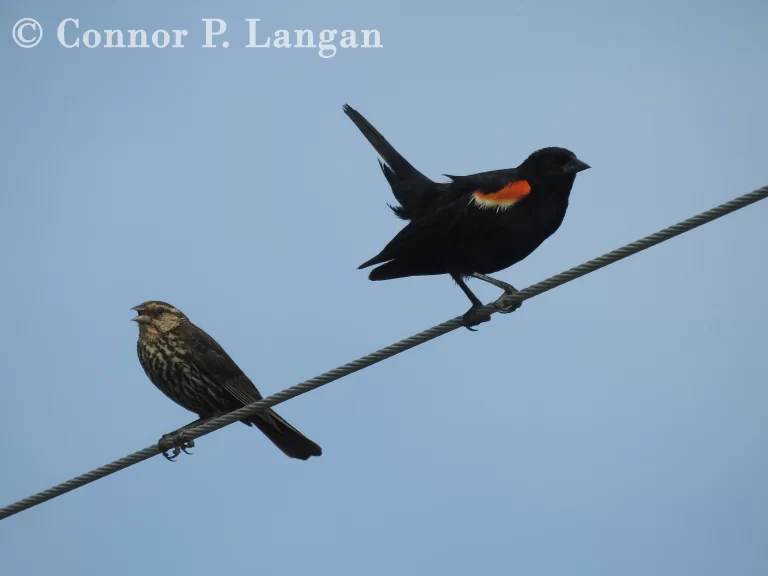Description
Yellow-headed Blackbirds are sizable, solidly-built blackbirds with black, triangular beaks.
Measuring 8.3 to 10.2 inches in total length, these birds weigh anywhere from just under 2 ounces to 3.5 ounces.
Males have striking yellow heads, necks, throats, and chests. Their dark eyes are surrounded by black feathers, while the rest of their body is primarily black. Males have white patches on their wings that are apparent when they are flying.
Females have varying amounts of yellow on their heads and breasts-some birds have nearly as much yellow coloration as males, while others scarcely have yellow at all. Females have brown crowns and necks, while the rest of their bodies are a dark brown-black color.
Immature males are not as extensively yellow as adult males. Their bodies are not the solid black color of an adult male but are instead a brown-black color.
Yellow-headed Blackbirds that recently fledged from the nest are a mottled combination of black bodies with buffy heads, necks, and chests.
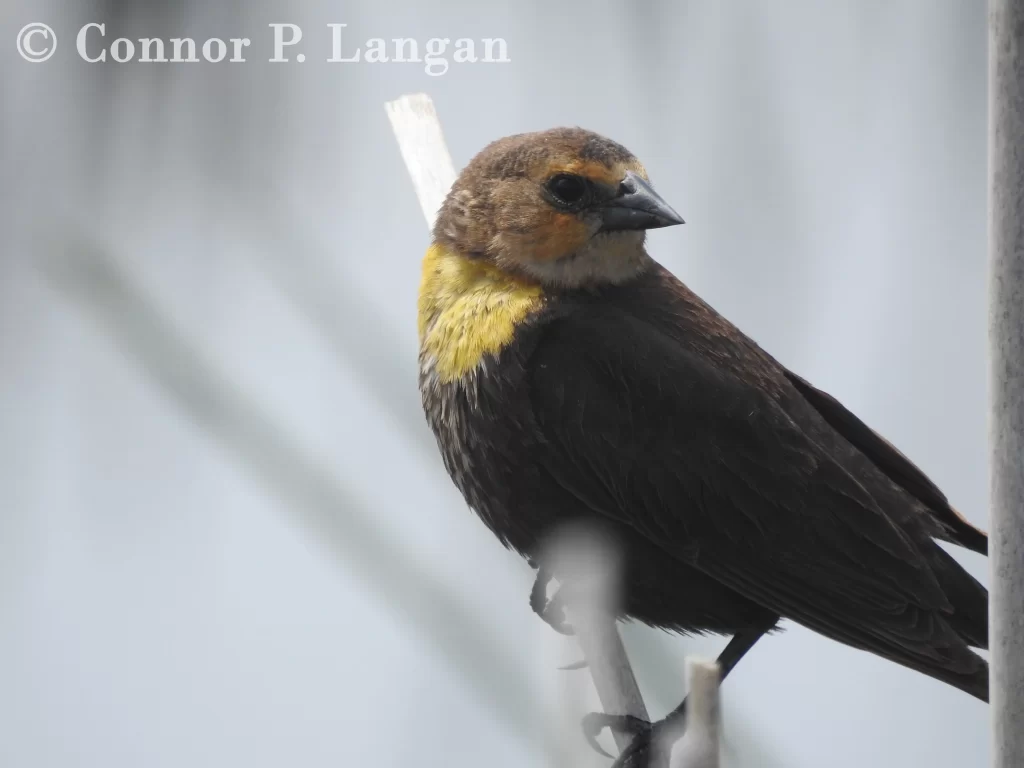
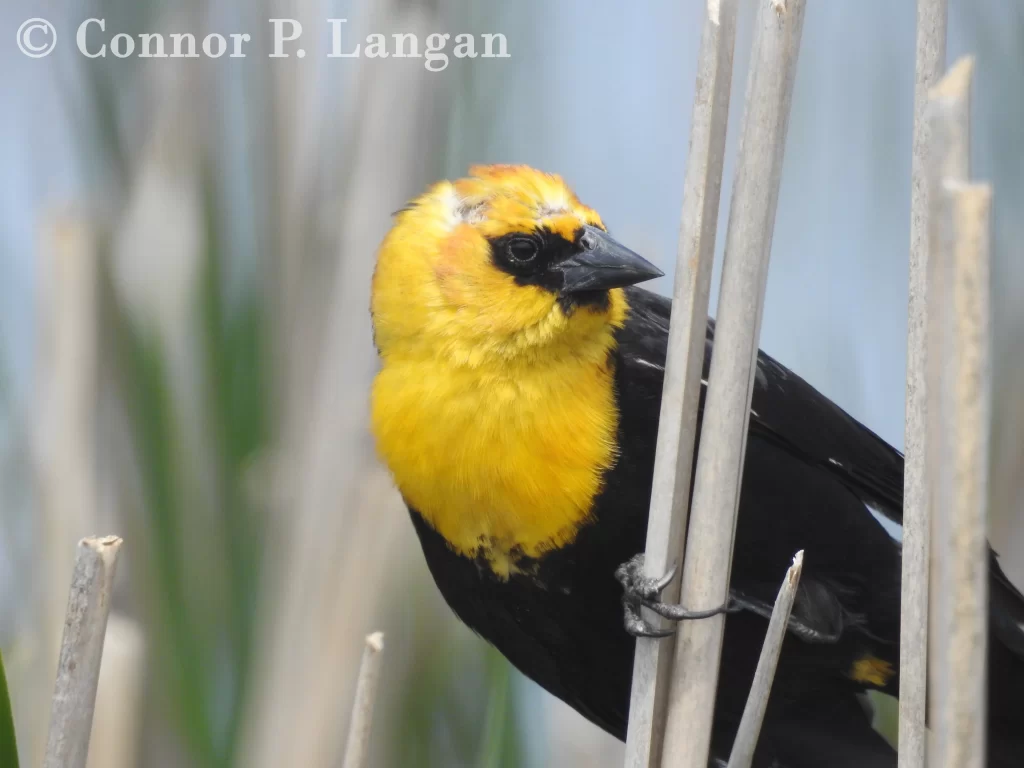
Behavior
Yellow-headed Blackbirds have a complex social system. Males establish territory and defend it from other males, with older, dominant males getting their pick of the best territory. This means second-year birds may not be able to secure a territory for themselves.
Females seek the best territories and mate with the male who defends the territory or with one of his neighbors.
Yellow-headed Blackbird Diet
These blackbirds primarily consume insects during the summer months, as this food source is abundant and full of energy. In the nonbreeding season, Yellow-headed Blackbirds consume seeds in overgrown fields, fallow farm fields, and grassy habitats.
Habitat
Yellow-headed Blackbirds breed in marsh-like habitats such as wetlands, wet meadows, ponds, and anywhere else where cattails or reeds are widely available for establishing a nest.
During migration, look for this species in fallow agricultural fields, marshes, parks, or mixed in with groups of other blackbirds. Yellow-headed Blackbirds survive in grasslands and croplands in the winter.
Range
Yellow-headed Blackbirds breed throughout much of western North America. They are fairly common breeders in some Midwestern states. However, these blackbirds are rare breeders in states like Indiana, Michigan, and Ohio.
This species winters in the Southwestern United States and much of Mexico. Males typically are found further north in winter.
Breeding
Yellow-headed Blackbirds are polygynous by nature, with dominant males reproducing with around 10 females. Males that cannot secure a territory for themselves will find it difficult to reproduce. Females may mate with males in neighboring territories if the male within their territory is preoccupied.
Females construct their nests in reeds, bulrushes, or cattails over water. The nest is attached to vegetation and anchored to a handful of plants. The female constructs the nest by herself from grasses and aquatic vegetation.
Yellow-headed Blackbirds produce a single brood of eggs each year, with each clutch containing between 2 to 5 eggs. It takes between 12 to 13 days for eggs to hatch, with nestlings leaving the nest as soon as 1 week later and as long as 2 weeks later.
Backyard Birding
Though Yellow-headed Blackbirds will not nest in birdhouses, this species may visit a bird feeder to feed on various seeds. If you have a variety of seeds to offer, you may be pleasantly surprised to find one of these birds foraging under a bird feeder in your yard.
Unless you live adjacent to a sizable marsh with plenty of aquatic vegetation, this species is not likely to nest in your yard.
Yellow-headed Blackbird Population Status
Around 11 million Yellow-headed Blackbirds exist today, with numbers rising or falling annually depending on wetland conditions in a given year.

